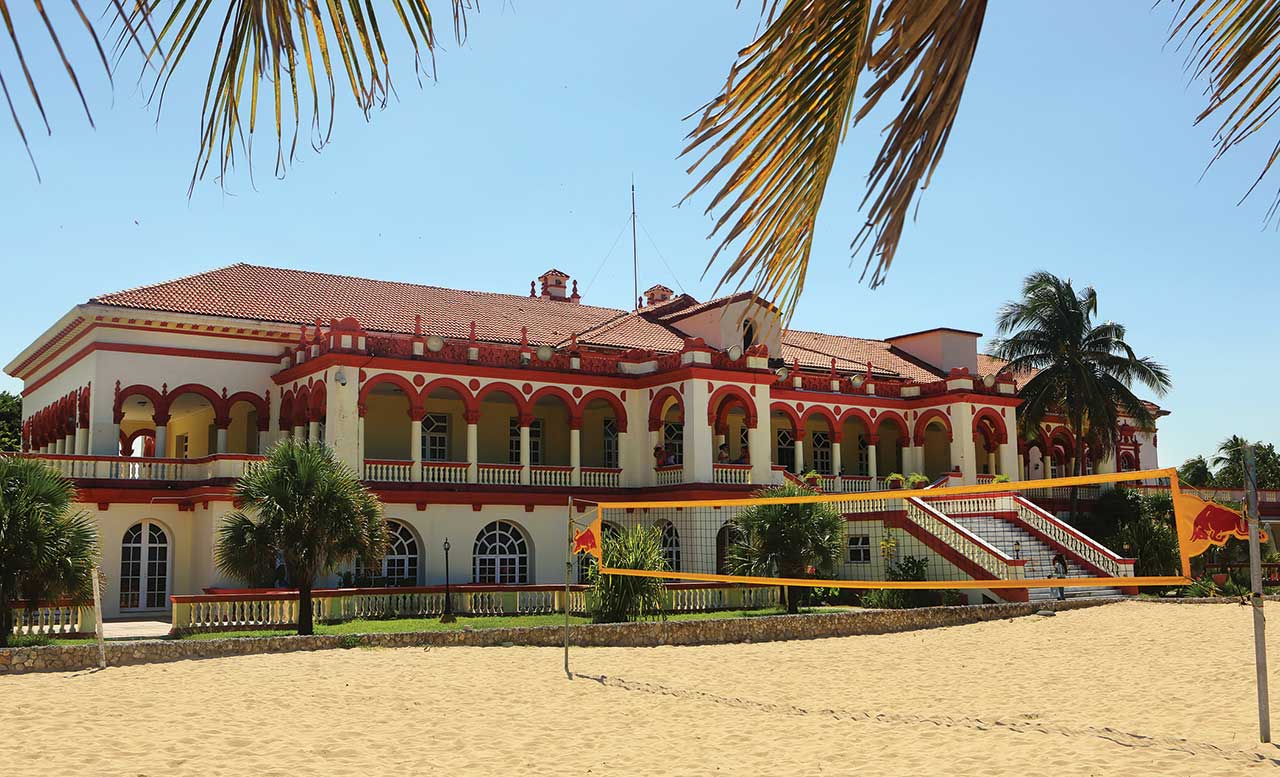West of Vedado and the Río Almendares, the municipio of Playa extends to the western boundary of Havana as far as the Río Quibu. Most areas were renamed following the Revolution. Gone are Country Club and Biltmore, replaced with politically acceptable names such as Atabey, Cubanacán, and Siboney, in honor of Cuba’s indigenous past.
Primera Avenida (1st Avenue, 1ra Av.) runs along the shore. Time-worn balnearios (bathing areas) are found along Miramar’s waterfront, cut into the shore. Of limited appeal to tourists, they draw Cubans on hot summer days.
Inland, running parallel at intervals of about 200 meters, are 3ra Avenida, 5ta Avenida (the main thoroughfare), and 7ma Avenida.
Tunnels under the Río Almendares connect Miramar to Vedado. The Malecón connects with 5ta Avenida; Línea (Calle 9) connects with 7ma Avenida and Avenida 31, which leads to the Marianao district; Calle 11 also connects with 7ma Avenida; Calle 23 becomes Avenida 47, linking Vedado with Kohly and Marianao.
Beyond Miramar, 5ta Avenida curls around the half-moon Playa Marianao and passes through the Náutico and Flores districts, the setting for Havana’s elite prerevolutionary social clubs and balnearios. Following the Revolution they were reopened to the hoi polloi and rechristened. The beaches—collectively known as Playas del Oeste—are popular with Cubans on weekends, when they get crowded. There was even an eponymous mini-version of New York’s famous Coney Island theme park, re-created in 2008 as Isla de Coco Parque Temático (tel. 07/208-0330, Wed.-Fri. 4pm-10pm, Sat.-Sun. 10am-10pm).
Commanding the scene are the palatial Mudejar-style former Balneario de la Concha (5ta e/ 112 and 146) and, immediately west, the Balneario Club Náutico with its sweeping modernist entrance. Beyond the Río Quibu, 5ta Avenida passes into the Flores district. The Havana-Biltmore Yacht and Country Club was here, dating from 1928 and fronting Havana’s most beautiful expanse of white sand. After the Revolution, the beach was opened to all Cubans and the former casino and hotel became a workers’ social club. The “Yacht” was founded in 1886 and became the snootiest place in Havana (it was here that President Fulgencio Batista, mulatto, was famously refused entry for being too “black”) until the Revolution, when it became the Club Social Julio Antonio Mella, for workers. Today, as the Club Habana (5ta Av., e/ 188 y 214, Playa, tel. 07/275-0100), it has reverted to its former role as a private club for the (mostly foreign) elite. Nonmembers are welcome (daily 9am-7pm, Mon.-Fri. CUC20, Sat.-Sun. CUC30) to use the beach, water sports, and pool.

Club Habana. Photo © Christopher P. Baker.
Fidel Castro’s main domicile is at Punta Cero, in Jaimanitas, although you can’t see it. The home is set in an expansive compound surrounded by pine trees and electrified fences and heavy security south of Avenida 5ta. All streets surrounding it are marked as one-way, heading away from the house, which is connected by a tunnel to the navy base immediately west of Club Havana. Avenida 5ta between Calles 188 and 230 is a no-photography zone.
Cubanacán is—or was—Havana’s Beverly Hills, a reclusive area on either side of the Río Quibu. It was developed in the 1920s with winding tree-lined streets on which the most grandiose of Havana’s mansions arose. An 18-hole golf course at the Havana Country Club, lending the name Country Club Park to what is now called Cubanacán, still the swankiest address in town. Following the Revolution, most of the area’s homeowners fled Cuba. Their mansions were dispensed to Communist Party officials, many of whom live in a lap of luxury that the vast majority of Cubans can only dream of and, of course, never see. The Castros maintain several homes here, and the area is replete with military camps and security personnel. Other homes serve either as “protocol” houses—villas where foreign dignitaries and VIPs are housed during visits—or as foreign embassies and ambassadors’ homes.
One of the swankiest mansions was built in 1910 for the Marqués de Pinar del Río; it was later adorned with 1930s art deco glass and chrome, a spiral staircase, and abstract floral designs. Today it is the Fábrica El Laguito (Av. 146 #2302, e/ 21 y 21A, tel. 07/208-4654, by appointment only), the nation’s premier cigar factory, making Montecristos and the majority of Cohibas—the premium Havana cigar.
Havana’s impressive convention center, the Palacio de las Convenciones (Convention Palace, Calle 146, e/ 11 y 13, tel. 07/202-6011), was built in 1979 for the Non-Aligned Conference. The main hall hosts twice-yearly meetings of the Cuban National Assembly. To its rear, Pabexpo (Av. 17 y 180, tel. 07/271-6775) has four exhibition halls for trade shows.
Cuba’s biotechnology industry is also centered here and extends westward into the districts of Atabey and Siboney, earning the area the moniker “Scientific City.” The Centro de Ingenieria Genética y Biotecnología (Center for Genetic Engineering and Biotechnology, Av. 31, e/ 158 y 190, Havana, tel. 07/271-6022), Cuba’s main research facility, is perhaps the most sophisticated research facility in any developing nation.
Excerpted from the First Edition of Moon Havana.